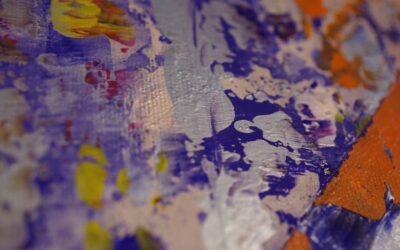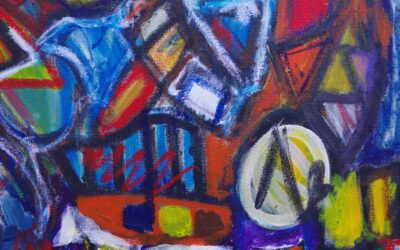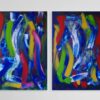Abstract Expressionism, a movement that emerged in the 1940s and 1950s in America, is more than a visual spectacle; it’s a conversation between the artist and the viewer. Rooted in emotional spontaneity and creative freedom, this art form goes beyond traditional representation, inviting us to explore the unknown and experience the raw, unfiltered emotions of the human psyche.
The Emotional Core of Abstract Expressionism
At its heart, Abstract Expressionism is a mirror of emotion. It doesn’t aim to depict reality but rather to convey an internal landscape of feelings and thoughts. The movement gave artists like Jackson Pollock, Mark Rothko, and Willem de Kooning the freedom to let their subconscious minds flow onto the canvas, unrestrained by form or convention. Pollock’s energetic drips and splatters, for instance, express both chaos and control, embodying a tension that resonates with human complexity.
“Painting is self-discovery. Every good artist paints what he is,” Pollock once said. His statement captures the essence of Abstract Expressionism: an unfiltered exploration of identity, fear, joy, and turmoil. The unpredictability of the brushstroke reflects the unpredictability of life, making the art deeply relatable despite its non-representational nature.
The Psychology of Abstract Art
From a psychological perspective, abstract art activates parts of the brain associated with emotion and interpretation. Unlike figurative art, which directly represents objects or scenes, abstract art leaves space for subjective meaning. Recent studies have shown that abstract works can stimulate the viewer’s imagination and encourage introspection.
A 2020 study published in Frontiers in Psychology revealed that abstract art engages the viewer’s default mode network (DMN)—a part of the brain associated with self-referential thought and daydreaming. This explains why people often see different things in the same abstract painting; it’s a deeply personal experience, shaped by individual memories, emotions, and perspectives.
The Unpredictable Nature of Creation
Abstract Expressionism thrives on spontaneity and intuition. The creative process itself is as important as the final work. Artists often describe losing themselves in the act of painting, allowing the materials and emotions to guide them. The result is a sense of immediacy and authenticity—an unrepeatable moment captured on canvas.
For the viewer, this unpredictability translates into a dynamic experience. The same painting can evoke different feelings on different days, depending on one’s mood or state of mind. As Rothko famously said, “A painting is not about an experience. It is an experience.”
What Is Abstract Art Good For?
Some might question the purpose of abstract art, dismissing it as “random” or “incomprehensible.” However, its value lies precisely in its openness. Abstract art invites viewers to pause, reflect, and connect with their inner world. It doesn’t dictate meaning; instead, it encourages personal interpretation.
Art therapist Cathy Malchiodi argues that abstract art has therapeutic benefits, providing a non-verbal outlet for emotions. By engaging with abstract art, individuals can process feelings that are difficult to articulate. Similarly, abstract art can foster creativity and innovation by encouraging us to think beyond the obvious.
The Power of Multiple Interpretations
One of the greatest strengths of Abstract Expressionism is its capacity for multiple interpretations. A single painting can evoke anger, sadness, joy, or serenity—depending on who is looking at it. This multiplicity of meaning reflects the complexity of human experience.
In this way, abstract art acts as a universal language, transcending cultural and linguistic barriers. It speaks to the shared emotions and uncertainties that make us human, while also honoring our individuality.
The Eternal Dialogue
Abstract Expressionism reminds us that art is not a puzzle to be solved but a dialogue to be experienced. As Pollock suggested, “The painting has a life of its own. I try to let it come through.” This openness—to both creation and interpretation—is what makes abstract art timeless and transformative.
In a world that often seeks clarity and order, Abstract Expressionism dares us to embrace uncertainty. It challenges us to feel deeply, think freely, and find beauty in the unpredictable. So, what is abstract art good for? It is good for the soul—for reminding us that life, like art, is full of infinite possibilities waiting to be explored.









0 Comments